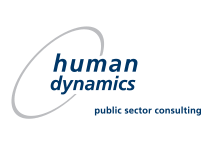
The project is financed by the European Union

Project implemented by a Consortium led by Hulla & Co. Human Dynamics KG
The EU emissions trading system (EU ETS) is a cornerstone of the EU's policy to combat climate change and its key tool for reducing greenhouse gas emissions cost-effectively. It is the world's first major carbon market and remains the biggest one.
The EU ETS works on the 'cap and trade' principle.
A cap is set on the total amount of certain greenhouse gases that can be emitted by installations covered by the system. The cap is reduced over time so that total emissions fall.
Within the cap, companies receive or buy emission allowances which they can trade with one another as needed. They can also buy limited amounts of international credits from emission-saving projects around the world. The limit on the total number of allowances available ensures that they have a value.
After each year a company must surrender enough allowances to cover all its emissions, otherwise heavy fines are imposed. If a company reduces its emissions, it can keep the spare allowances to cover its future needs or else sell them to another company that is short of allowances.
Trading brings flexibility that ensures emissions are cut where it costs least to do so. A robust carbon price also promotes investment in clean, low-carbon technologies.
The EU ETS is now in its third phase – significantly different from phases 1 and 2.
The main changes are:
A single, EU-wide cap on emissions applies in place of the previous system of national caps
Auctioning is the default method for allocating allowances (instead of free allocation), and harmonised allocation rules apply to the allowances still given away for free
More sectors and gases included 300 million allowances set aside in the New Entrants Reserve to fund the deployment of innovative renewable energy technologies and carbon capture and storage through the NER 300 programme
The system covers the following sectors and gases with the focus on emissions that can be measured, reported and verified with a high level of accuracy: